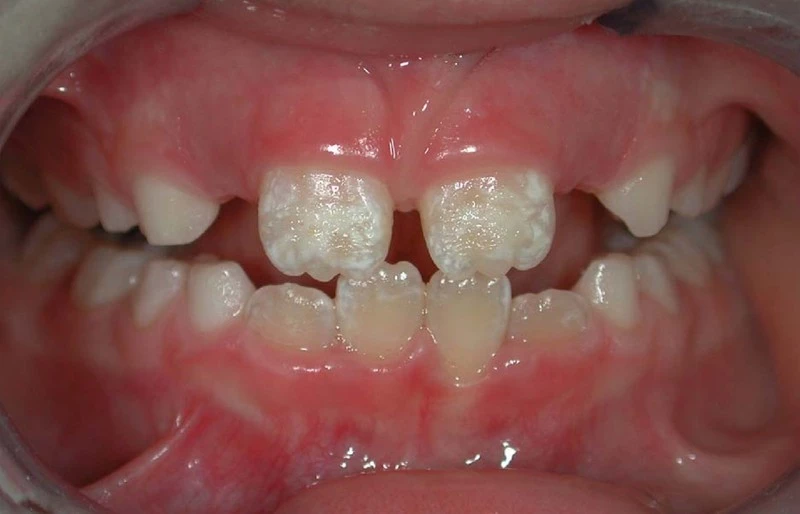Concerns Toward Enamel Hypomineralization
Preventive measures against dental caries aim to improve oral hygiene and to alter children’s dietary habits. The most common protocols involve fluoride application in varnish, in trays, in toothpaste or in mouth washes. Initial active carious lesions need to be remineralized while chronic or cavitated lesions need to be excavated and filled. The most important is monitoring teeth to inspect signs of demineralization, in order to avoid premature loss of teeth, especially in children.
Children with high caries risk, such as those with molar incisor hypomineralization and developmentally defective enamel, need special care through follow-up protocols. There is strong evidence on the association between hypomineralization and tooth decay; and hypomineralization is now considered one risk factor for caries process, which has multifactorial etiology. Faulty enamel formation increases the susceptibility of enamel to caries; and defective enamel structure is considered an ideal medium for plaque formation and invasion of cariogenic bacteria. Enamel hypomineralization presents as white/yellow/brown opacities with porous nature and unorganized enamel prisms.

In some cases, we can see disintegrated cusps and flattened occlusal surfaces as a result of hypomineralization, where we notice rapid progression of decay, teeth sensitivity and subsequent destruction of the crown. Fluoride-exposure programs are helpful in such cases to control dental caries, especially in light of the increased prevalence of enamel hypomineralization and resultant tooth decay in the 8-9 years old children.
It is also noticeable that the more the severity of enamel hypomineralization, the higher the susceptibility to dental caries. Children with defective enamel need to undergo regular caries evaluation (using the ICDAS criteria or other similar method) to determine what kind of therapy each child needs, which ranges from urgent intervention to only preventive. DMFS scoring is one of the effective methods which are used worldwide to confirm the status of children with hypomineralization; children with defective enamel generally have higher tooth-surface caries ratio and need more fillings.

Hypomineralization can be mild, moderate or severe according to density of the hydroxyapatite in enamel; such severity can be determined from the color of the opacities on the tooth surface (from yellow to brown). In mild cases, the density of hydroxyapatite is nearly 20–22% lower than sound enamel, 25–27% in moderate cases and up to 35% in severe cases. Patients with any type of enamel defects (including enamel hypoplasia or molar incisor hypomineralization) need proper caries-detection measures from the occlusal, facial and lingual surfaces as well as the interproximal areas following the WHO criteria or the Universal Visual Scoring System. ICDAS II and EAPD are two caries assessment systems which are more commonly used in research work nowadays, the first enables assessment of initial stages of caries while EAPD criteria allows for assessing extensive or atypical restorations surrounded by opacities.

